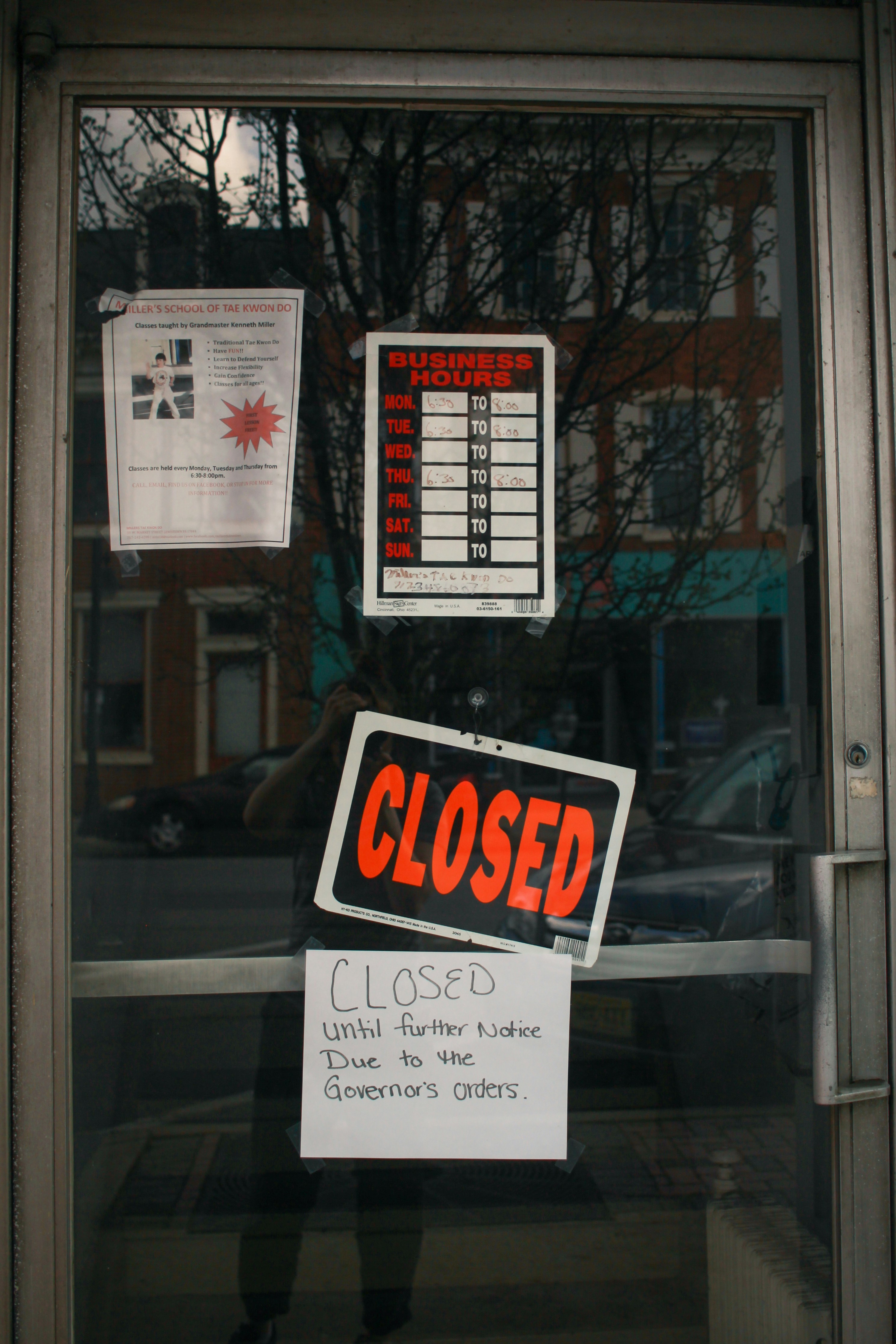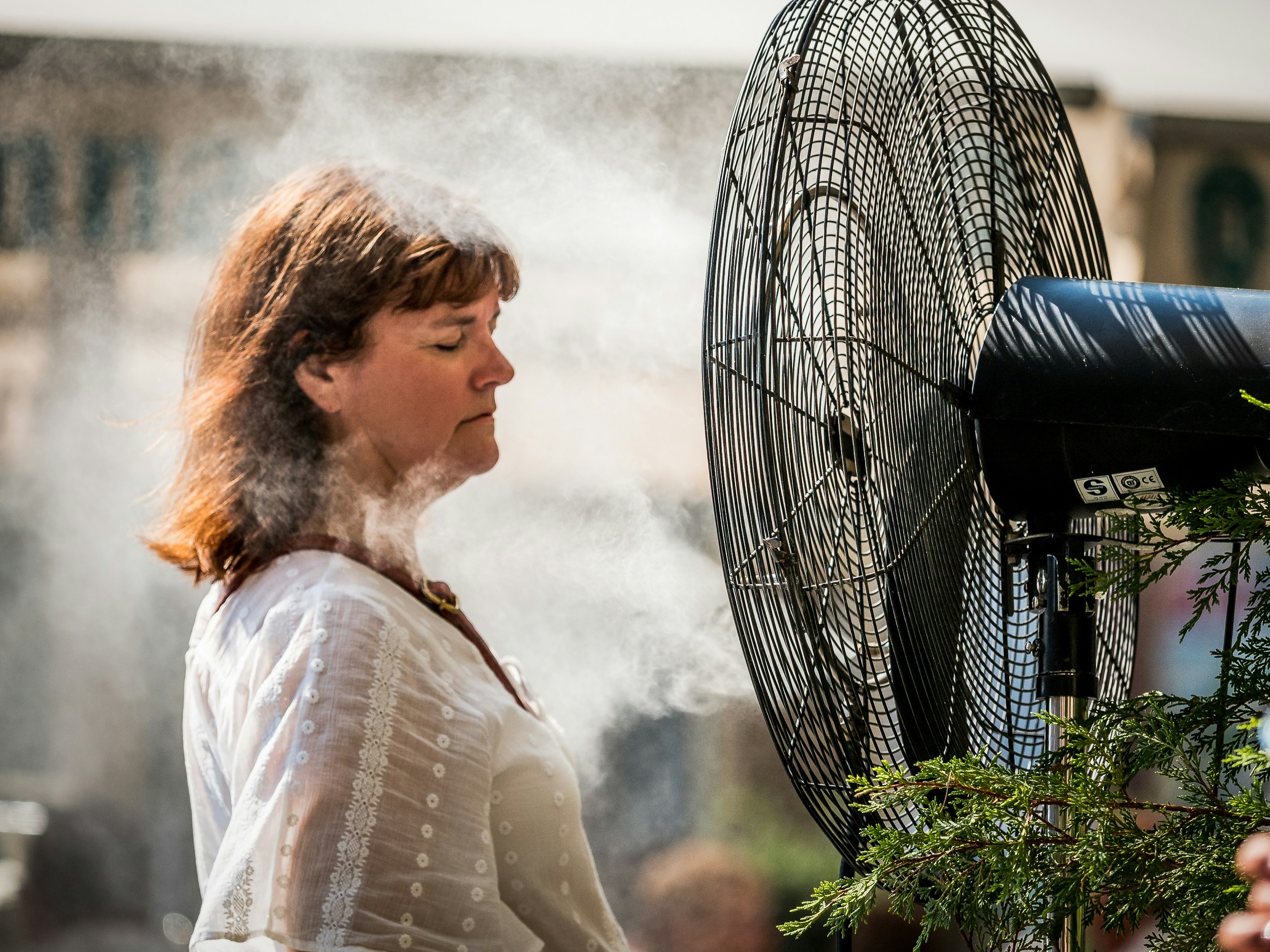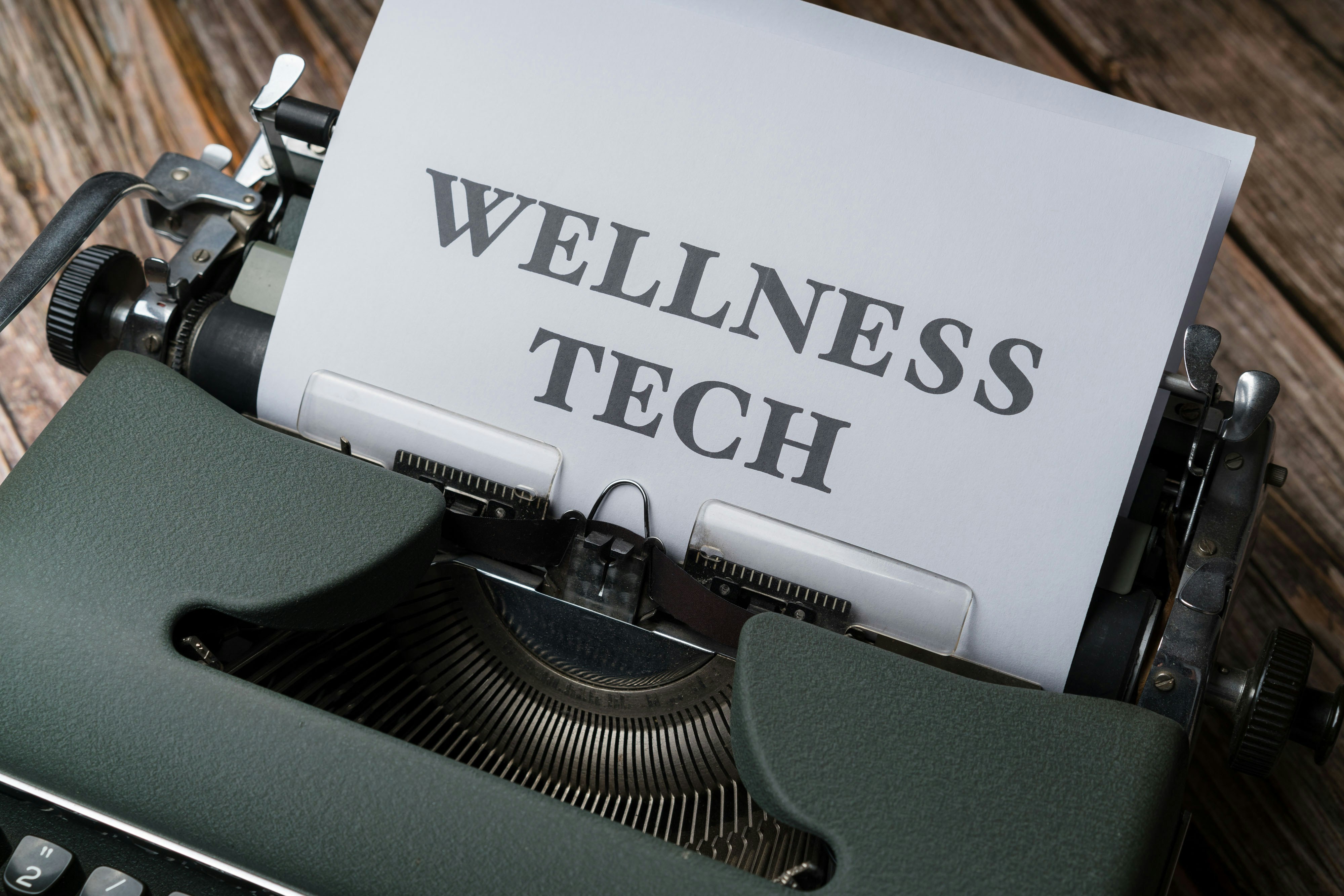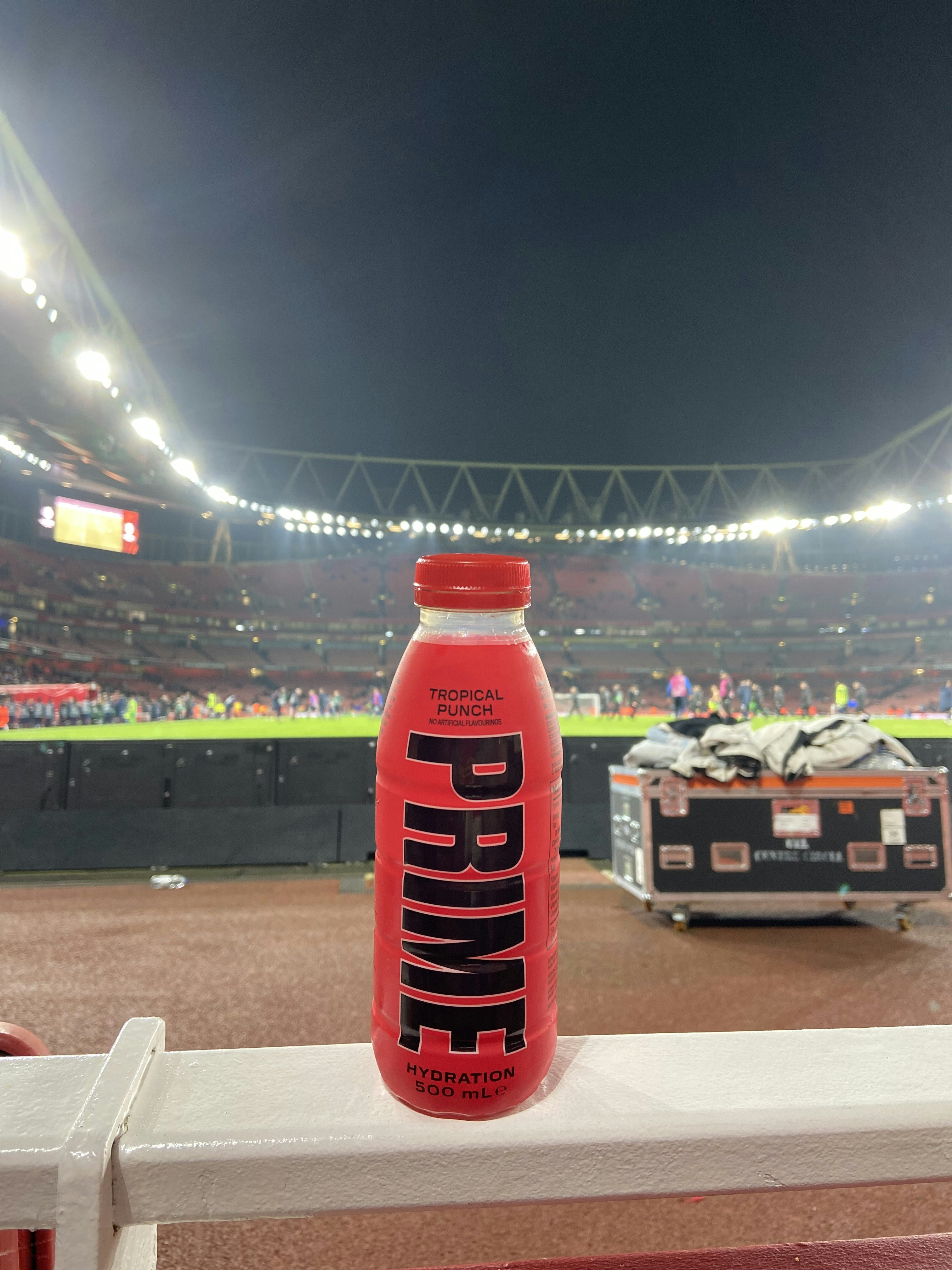
The Challenge of Extreme Heat
In recent years, the prevalence of extreme heat has become increasingly concerning, largely attributed to the effects of climate change. As global temperatures continue to rise, many regions are experiencing prolonged heatwaves that not only challenge daily life but also pose serious health risks. The consequences of enduring such high temperatures can be profound, affecting individual well-being, community dynamics, and even economic productivity.
The impact of extreme heat manifests in various ways—ranging from increased energy consumption as air conditioning becomes more essential, to higher rates of heat-related illnesses and even fatalities. Vulnerable populations, such as the elderly and those with pre-existing health conditions, are particularly at risk. Consequently, it is imperative to find effective methods to stay cool during these sweltering periods to ensure comfort and safeguard health.
Moreover, extreme heat can impede outdoor activities, limit physical exertion, and reduce overall productivity. This situation necessitates not only awareness of the risks associated with high temperatures but also proactive measures to combat the heat. As urban areas continue to expand and climate change exacerbates weather patterns, the challenge of staying cool is becoming a critical concern that warrants attention.
Finding innovative and practical solutions to cope with extreme heat is essential for maintaining a high quality of life. By implementing various strategies and incorporating them into daily routines, individuals can effectively mitigate the adverse effects of heat exposure. This blog post will explore three clever hacks that can assist in staying cool and comfortable, thereby promoting health and productivity while facing the challenges posed by extreme temperatures.
DIY Cooling Products
Extreme heat can be quite discomforting, but with a few clever DIY cooling products, you can significantly enhance your comfort levels without spending a fortune. One simple and effective solution is to create a refreshing spray bottle. By mixing water with a few drops of essential oils, such as peppermint or lavender, you can produce a delightful mist that cools the skin and uplifts the spirit. Keep this spray bottle in the refrigerator for an instant chill when needed.
Another innovative hack is to make homemade cooling towels. To create these towels, start by soaking a regular cotton towel in a mixture of water and a bit of vinegar. After soaking, wring out the excess liquid and place the towel in a plastic bag in your freezer for several hours. Once chilled, you can drape this towel around your neck or on your forehead to combat the sweltering heat. The evaporation of the moisture will help cool your body temperature, making it an ideal accessory for outdoor activities.
Upgrading your fan can also be a game-changer in the fight against heat. Instead of relying solely on your fan, consider enhancing its cooling power by utilizing frozen water bottles. Simply fill plastic bottles with water, freeze them overnight, and then place them in front of the fan. The moving air will circulate over the cold bottles, creating a refreshing breeze that imitates the effect of an air conditioner. This method is particularly useful in non-air-conditioned spaces and can provide significant relief during hot summer days.
By incorporating these DIY cooling products into your summer routine, you can effectively manage the heat and maintain a comfortable environment. The utilization of commonly available materials not only promotes creativity but also encourages resourcefulness in tackling intense weather conditions.
Optimizing Your Environment
In extreme heat, optimizing your living or working environment is essential for maintaining comfort without the excessive reliance on air conditioning systems. Several techniques can be employed to create a cooler atmosphere, relying on natural methods and environmental adjustments.
One effective strategy is to utilize blackout curtains or reflective window films. These materials can significantly reduce the amount of solar heat that enters a space. By blocking both visible light and infrared rays, blackout curtains help maintain lower indoor temperatures, making your home or office feel cooler throughout the day. It is advisable to install these on windows that receive direct sunlight, particularly during the hottest hours.
Proper ventilation is another crucial factor in keeping indoor areas cool. Ensuring that buildings are well-ventilated allows hot air to escape and cooler air to circulate. This can be achieved by strategically opening windows when the outdoor temperature drops, usually in the evening or early morning. In combination with this, creating cross-breezes can further enhance airflow. By positioning fans near windows that face prevailing winds, cool air is drawn indoors while hot air is pushed out, facilitating a natural cooling system.
Furthermore, leveraging natural shade is an underutilized method that can effectively lower temperatures. Planting trees or placing large potted plants around windows can block direct sunlight and absorb heat. Additionally, outdoor awnings or pergolas can create shaded areas that also cool the air around them. Each of these strategies works in alignment with natural forces to optimize your environment and reduce reliance on mechanical cooling methods.
By employing these practical techniques—blackout curtains, effective ventilation, cross-breezing, and natural shading—individuals can effectively lower indoor temperatures, creating a more comfortable living or working area in extreme heat.
Staying Hydrated and Diet Hacks
During extreme heat, maintaining proper hydration is critical for both comfort and health. Our bodies lose significant amounts of fluid through sweat, and replenishing this lost fluid is essential to prevent dehydration. Drinking water is the most straightforward approach; however, incorporating beverages that have cooling properties can enhance hydration further. Consider consuming electrolyte-rich drinks, such as coconut water or sports drinks, as these not only replenish lost fluids but also replace essential minerals that are lost during intense sweating.
In addition to beverages, the foods we consume play a significant role in our body’s ability to stay cool. It is advisable to include snacks and meals that are hydrating in nature. Fruits and vegetables, such as cucumbers, watermelon, oranges, and strawberries, have high water content and can help maintain hydration levels. These foods are not only refreshing but also provide essential vitamins and minerals that support overall health and wellness during heat waves.
Furthermore, eating small, light meals throughout the day rather than large heavy ones can prevent overheating. Meals that are rich in water content and contain cooling spices, like mint and coriander, can aid in reducing body temperature. Incorporating salads and smoothies into your diet can offer both hydration and nutritional benefits, making these choices ideal in extreme heat conditions.
Additionally, being aware of the role of electrolytes in hydration is vital. Electrolytes, such as sodium and potassium, help manage fluid balance in the body. Consuming foods that are rich in these minerals, such as bananas, leafy greens, and yogurt, can help keep electrolyte levels stable while also ensuring that our bodies remain well-hydrated. By taking a thoughtful approach to hydration and nutrition, one can effectively combat the challenges posed by extreme heat.
The Importance of Rest and Leisure
In extreme heat, prioritizing rest and leisure becomes essential for maintaining both physical and mental health. When temperatures soar, our bodies expend more energy to cool down, making it crucial to incorporate periods of relaxation into our daily routines. One effective strategy to stay cool is to schedule outdoor activities during the cooler times of day, such as early morning or late evening. Engaging in light exercise, such as walking or yoga, during these hours can help to avoid overheating while allowing individuals to enjoy the pleasant ambiance of nature.
Indoor activities also play a vital role when temperatures rise. Enjoying leisurely pursuits at home—such as reading, painting, or engaging in hobbies—can provide not only entertainment but also a respite from the oppressive heat outside. Utilizing fans, air conditioning, or simply staying hydrated can enhance comfort levels during these indoor endeavors, preventing the exhaustion often associated with high temperatures.
Napping is another valuable practice, as it allows the body to reset and recover from heat exposure. A short, refreshing nap can significantly reduce feelings of fatigue brought about by extended heat exposure, thereby increasing overall energy levels for the remainder of the day. Balancing productivity with rest is important in these conditions; adopting a flexible schedule that allows moments of leisure alongside work can lead to greater efficiency and well-being.
Ultimately, finding a harmonious balance between activity and relaxation will enhance one’s ability to cope with extreme heat. By emphasizing rest and leisure during hot weather, individuals can mitigate the adverse effects of high temperatures and maintain both comfort and productivity levels. As summertime progresses, integrating these mindful practices will prove beneficial for overall health and performance.
Safety Precautions to Avoid Heat-Related Illness
Extreme heat can pose significant risks to health and well-being. Understanding these risks and taking appropriate safety precautions is essential to prevent heat-related illnesses such as heat exhaustion and heatstroke. Heat exhaustion often manifests through symptoms such as heavy sweating, weakness, dizziness, nausea, and headaches. If left unaddressed, it can escalate into heatstroke, a severe condition characterized by a body temperature that exceeds 104°F (40°C), confusion, unconsciousness, and potential organ failure.
To protect oneself during extreme heat, it is crucial to recognize when to seek shelter from outdoor exposure. Staying indoors during peak heat hours, typically from 10 AM to 4 PM, is advisable. Utilize fans, air conditioning, or other cooling systems in homes and workplaces to maintain a comfortable environment. If air conditioning is unavailable, spending time in air-conditioned public spaces such as libraries or malls can provide relief from the stifling heat.
Additionally, staying hydrated is vital. Drinking plenty of water throughout the day helps regulate body temperature and prevents dehydration. It is important to avoid alcohol and caffeine, as they can lead to increased fluid loss. When venturing outdoors, wearing lightweight, loose-fitting clothing in light colors can further reduce the body’s thermal burden.
Special attention should be given to vulnerable groups, including the elderly and individuals with chronic health conditions. These populations may be more susceptible to heat-related illnesses due to their reduced ability to regulate body temperature or lack of mobility. Caregivers and family members should regularly check on these individuals during extreme heat events, ensuring they have adequate access to hydration and a cool environment.
By being attentive to these precautions and understanding the signs of heat-related illnesses, individuals can mitigate the adverse effects of extreme heat on their health and overall well-being.
Making Use of Technology
As the climate changes, the demand for effective cooling solutions becomes increasingly prevalent. Fortunately, modern technology offers numerous advancements that can help combat extreme heat effectively. From smart home devices to personal cooling gadgets, technology plays a critical role in optimizing our environment and enhancing comfort levels during excessively warm weather.
Smart home devices, such as programmable thermostats and smart air conditioning units, allow users to regulate indoor temperatures with precision. These systems can be programmed to adjust temperature settings based on occupancy or time of day, ensuring that energy is used efficiently while maintaining a comfortable atmosphere. Furthermore, some models can be controlled remotely via smartphone applications, enabling homeowners to make adjustments even when they are away, thereby saving energy and ensuring a consistent temperature.
In addition to smart thermostats, mobile applications have emerged as valuable tools to help monitor the ever-changing heat levels. These apps provide real-time weather updates, alerting users to temperature spikes and heat advisories. By keeping track of fluctuations in outdoor conditions, individuals can better prepare for heat waves and make informed decisions about when to stay indoors or optimize their cooling arrangements.
Moreover, portable cooling gadgets have gained popularity as practical solutions for personal comfort. Items such as handheld fans or personal air coolers use innovative technologies to provide immediate relief in hot conditions. Many of these devices are designed to be lightweight and easily transportable, making them accessible for outdoor activities or travel. By leveraging these gadgets, individuals can enhance their personal comfort without relying solely on larger, energy-consuming systems.
In conclusion, the integration of technology into our efforts to combat extreme heat is proving to be invaluable. The use of smart home devices, monitoring apps, and portable cooling gadgets showcases the potential innovation has in creating more efficient cooling solutions, ultimately contributing to a more comfortable and sustainable way of living in increasingly warm climates.
Community Solutions for Coping with Extreme Heat
As climate change continues to intensify, communities around the world are facing the challenge of extreme heat. Addressing this issue on a community level is crucial for promoting public health and safety. Communities can implement several solutions that not only provide immediate relief but also foster long-term resilience against rising temperatures.
One effective community-based solution is the establishment of local cooling centers. These designated spaces, such as libraries, community centers, and schools, offer residents a refuge from extreme heat, equipped with air conditioning and cold drinking water. Local governments can promote these centers through outreach programs, ensuring residents are aware of their availability during heat waves. Participation can be heightened by collaborating with organizations that specialize in heat health research to disseminate literature on the importance of seeking cooler environments during peak heat hours.
Additionally, community programs can provide resources, such as fans, water bottles, and educational materials, to vulnerable populations. Strategic partnerships with non-profits and healthcare providers can enhance outreach efforts, targeting low-income families and elderly residents who may be most at risk during extreme heat episodes. Encouraging neighborhood volunteers to check on their neighbors during hot weather can also foster a sense of community solidarity and mutual support.
Public awareness initiatives play a pivotal role in mitigating the risks associated with extreme heat. Hosting workshops that educate residents on recognizing heat-related illnesses and implementing personal cooling strategies can equip them with the necessary knowledge to stay safe. Furthermore, utilizing social media platforms and local news channels to share heat advisories and tips on staying cool can significantly increase community engagement and preparedness.
By leveraging these community solutions, residents can effectively cope with extreme heat, creating a safer environment for everyone. Collaborative efforts not only enhance resources but also build community resilience, ensuring that neighborhoods are better prepared to face the challenges posed by soaring temperatures.
Conclusion: Empowering Yourself to Stay Cool
As we have explored throughout this post, staying cool during extreme heat is not only essential for comfort but also plays a critical role in maintaining health and well-being. The practical hacks discussed, such as utilizing fans effectively, creating DIY cooling systems, and staying hydrated, offer versatile options for adapting to rising temperatures. Each of these strategies empowers individuals to take control of their environment, significantly reducing the risk of heat-related illnesses.
It is important to recognize that extreme heat can impact anyone, and finding effective ways to stay cool is a proactive approach to personal safety. Experimenting with the various methods outlined, from the use of household items to clever hydration tactics, can lead to a more comfortable experience during the hottest months. Furthermore, sharing these strategies with family and friends can cultivate a collective awareness about the importance of cooling measures. After all, the effects of heat stress can extend beyond a single individual, impacting entire communities.
Prioritizing your well-being during periods of extreme heat is crucial. Integrating these hacks into your daily routine not only elevates your comfort but also supports your overall health. Take the time to recognize the signs of heat-related stress, and empower yourself with knowledge and tools that foster a cooler environment. Remember, adapting to climatic challenges is an ongoing journey, and proactively engaging with the recommended techniques can greatly benefit you and those around you.






















+ There are no comments
Add yours